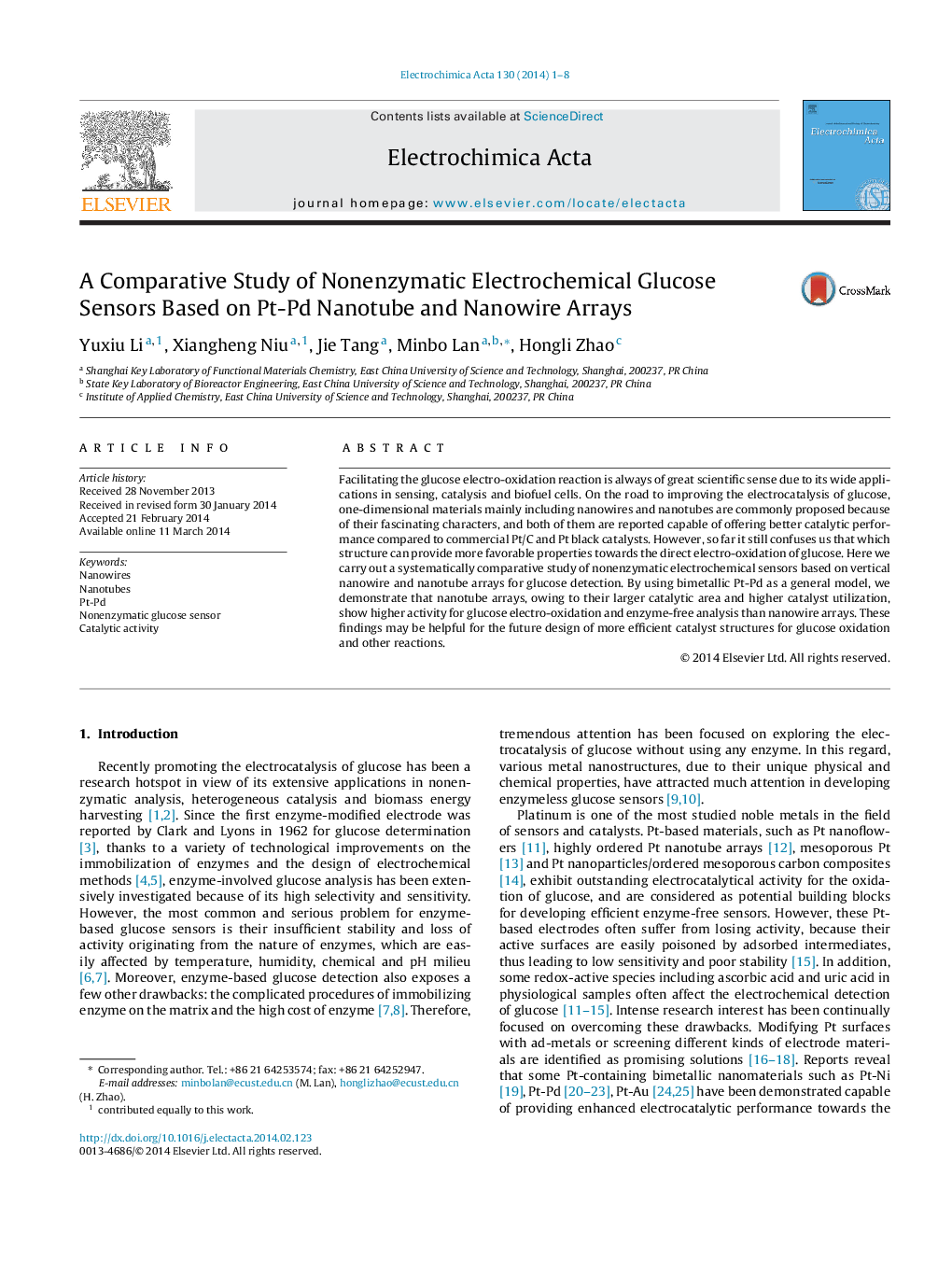| Article ID | Journal | Published Year | Pages | File Type |
|---|---|---|---|---|
| 185819 | Electrochimica Acta | 2014 | 8 Pages |
Facilitating the glucose electro-oxidation reaction is always of great scientific sense due to its wide applications in sensing, catalysis and biofuel cells. On the road to improving the electrocatalysis of glucose, one-dimensional materials mainly including nanowires and nanotubes are commonly proposed because of their fascinating characters, and both of them are reported capable of offering better catalytic performance compared to commercial Pt/C and Pt black catalysts. However, so far it still confuses us that which structure can provide more favorable properties towards the direct electro-oxidation of glucose. Here we carry out a systematically comparative study of nonenzymatic electrochemical sensors based on vertical nanowire and nanotube arrays for glucose detection. By using bimetallic Pt-Pd as a general model, we demonstrate that nanotube arrays, owing to their larger catalytic area and higher catalyst utilization, show higher activity for glucose electro-oxidation and enzyme-free analysis than nanowire arrays. These findings may be helpful for the future design of more efficient catalyst structures for glucose oxidation and other reactions.
